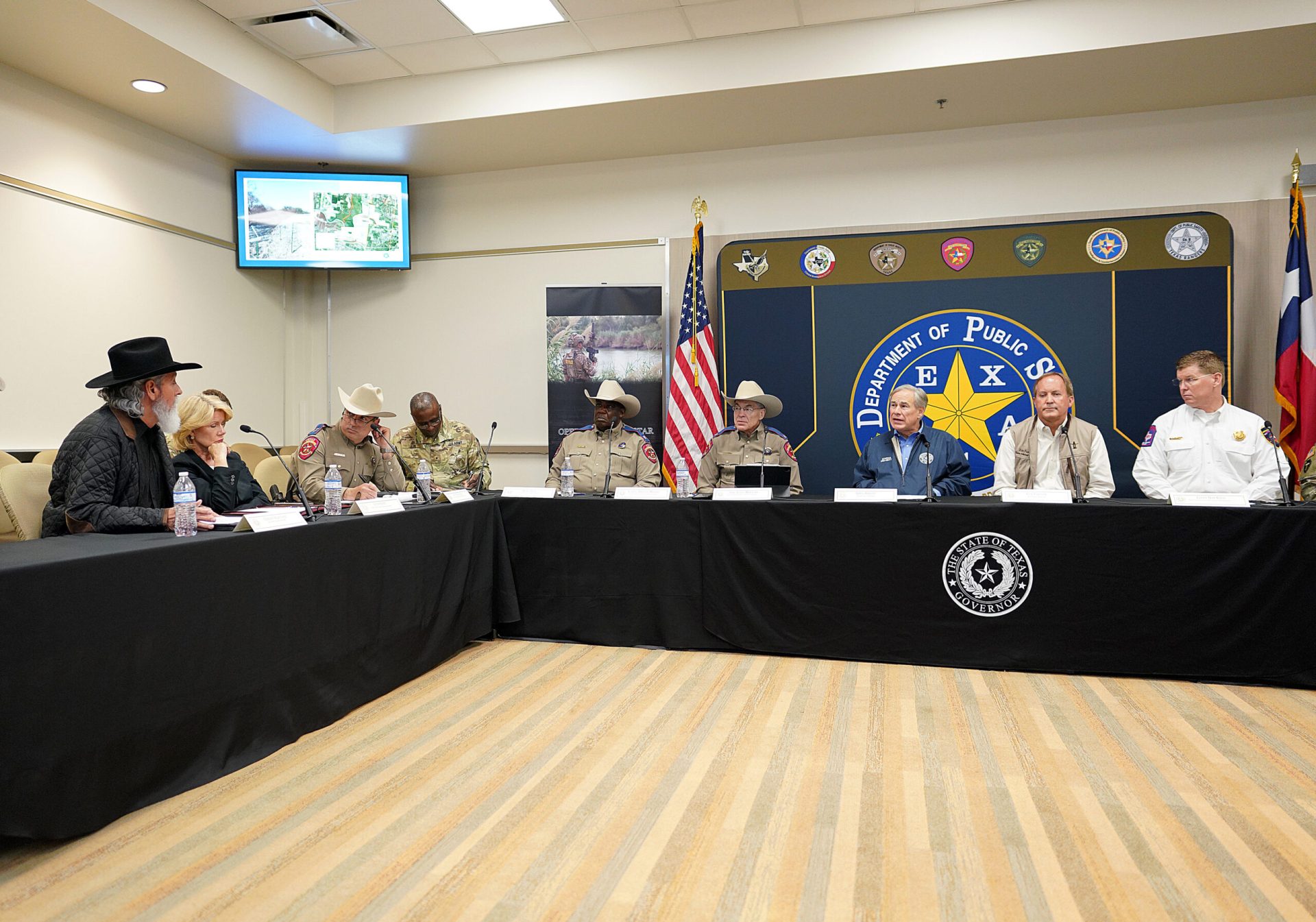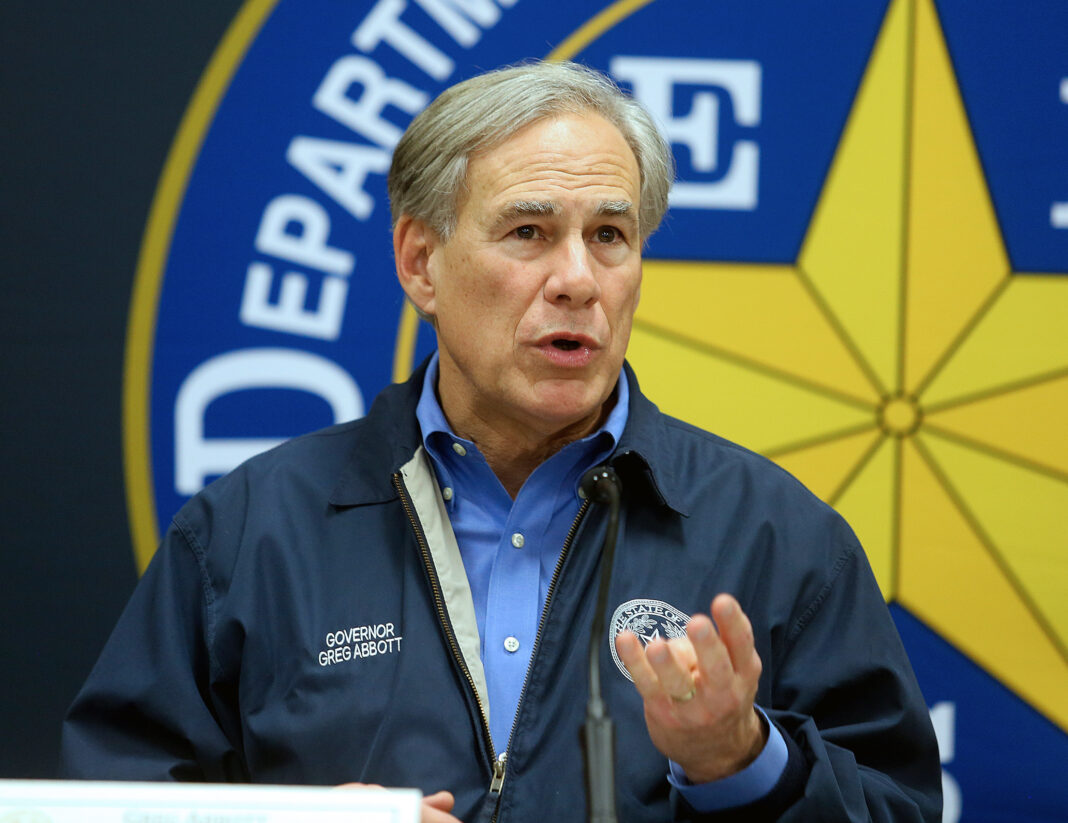WESLACO — Operation Lone Star, the controversial border security initiative implemented by Gov. Greg Abbott last year in response to a historic increase in migrant crossings at the Texas-Mexico border, is expanding into counties far from the banks of the Rio Grande.
The announcement came during a roundtable discussion between the governor, Texas Attorney General Ken Paxton, border sheriffs and some of the state’s highest leaders at the DPS headquarters in Weslaco Thursday afternoon.
“The successes of Operation Lone Star are enormous,” Abbott said in response to a question about the program’s expansion.
“If nothing else, just the amount of fentanyl that’s been taken off the streets… there would be thousands of more people who would have lost their life because of fentanyl had it not been for those (sic) people you see at the table today,” Abbott said, referring to the roundtable participants who have been instrumental in carrying out Operation Lone Star.
Already, state officials have expanded the program beyond the Rio Grande Valley and the border ranch counties to the north, to Jim Hogg County, according to Steve McCraw, director of the Texas Department of Public Safety.
Kenedy County, with its proximity to the Border Patrol checkpoint at Falfurrias, will soon join Operation Lone Star, as well, McCraw said.
“The landowners have been suffering, you know, criminal trespass problems for nearly a decade now,” McCraw said of the ranch country just north of Hidalgo County.
But therein lay a disconnect between the statistics cited by the governor and other officials Thursday as they hailed the successes of Operation Lone Star just days after its one-year anniversary — an incongruence between the two most celebrated metrics of the program: drug seizures and migrant apprehensions.
Calling him “feckless,” the governor repeatedly blamed President Joe Biden for both the rise in migrant crossings and the rise in fentanyl overdoses in the United States over the last year.
“Operation Lone Star and other law enforcement activities have now… achieved meaningful levels of success in dealing with the influx coming across the border,” Abbott said.
He cited the seizure of about 1,300 pounds of fentanyl and the apprehension of more than 212,000 migrants, including some 12,000 who were arrested by local authorities, largely on state criminal charges of criminal trespass.
But while the governor was careful not to conflate the two statistics as inextricably linked, others at Thursday’s news conference did, including Brandon Judd, president of the National Border Patrol Council, the labor union which represents Border Patrol agents.
Echoing Abbott’s criticisms of Biden, Judd said the president’s inaction on border security is “allowing the cartels to use illegal immigrants to distract law enforcement from the dangerous products that are coming across the border — all of the dangerous drugs.”
“Under Biden’s policies, they’re able to use illegal immigrants to facilitate that trafficking,” Judd said.
But statistics show that the majority — about 80% — of drug seizures occur at ports of entry, not in the field.
“(A)bout 65% of seized illicit drugs, by weight, were seized at land ports of entry at the border, about 28% of seized drugs were seized at air ports of entry, and about 5% were seized at sea ports of entry” between 2014 and 2018, according to a report by Congressional Research Service.

Abbott launched OLS last March as a direct response to a sharp rise in migrant crossings of people largely from the Northern Triangle countries of Guatemala, Honduras and El Salvador, but also from places like Haiti.
The governor issued a disaster declaration in 48 counties, thus allowing him to activate the state’s National Guard and surge both troops and DPS troopers to the border to “combat the smuggling of people and drugs into Texas,” according to a March 2021 news release.
The Texas Military Department has gone from stationing 500 personnel along the border to 10,000, according to Major Gen. Tracy R. Norris, the adjutant general of the Texas National Guard.
The vast majority of migrants crossing the Texas-Mexico border, however, have not been criminals, but migrants seeking asylum or better economic opportunities.
According to CBP’s own statistics, though Customs and Border Protection agents encountered 1.72 million migrants in 2021, nearly half-a-million of those were unaccompanied minors or members of family units.
As part of Operation Lone Star, however, Abbott empowered local law enforcement authorities to arrest migrants found on private property on state charges of criminal trespassing.
That led to the arrest of some 12,000 migrants, primarily in Kinney County just south of Del Rio, in what a Travis County judge has since labeled an unconstitutional policy.
Hundreds of those arrested were ultimately released from local jails after prosecutors failed to include appropriate information in their charging documents, or because they declined to pursue the charges at all. Other migrants were released after they were denied access to legal counsel for weeks.
Hundreds more migrants who were scooped up as part of Operation Lone Star are filing constitutional challenges to their border county arrests in Travis County.
Despite that, however, Abbott and McCraw pledged to expand OLS into the ranchlands.
“Yes, for criminal trespass, that’s what we’re planning,” McCraw said. “It’s already started in Jim Hogg County.”
View Monitor photojournalist Joel Martinez’s full photo gallery here:
Photo Gallery: Touting ‘Operation Lone Star’ successes, Abbott announces program expansion





